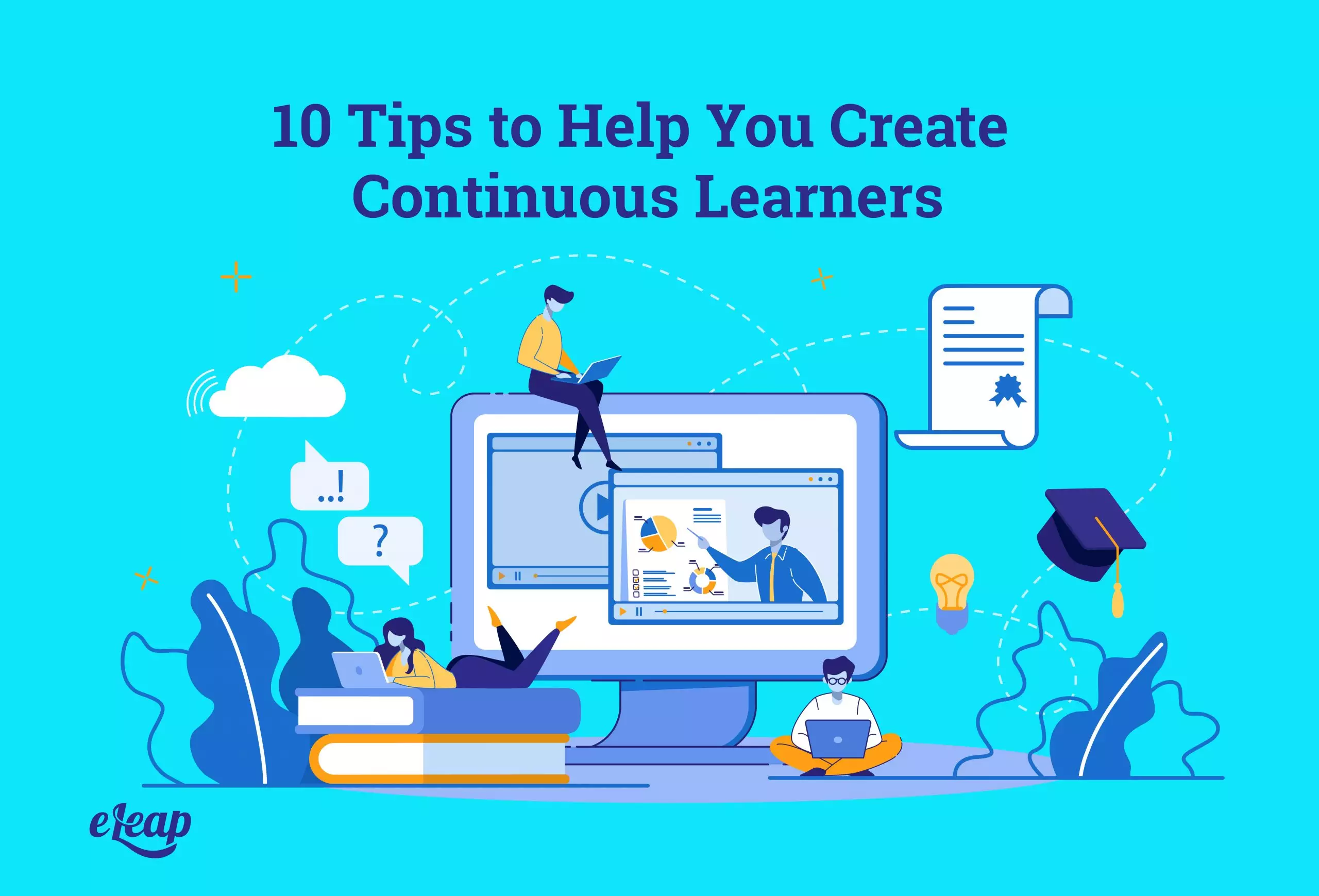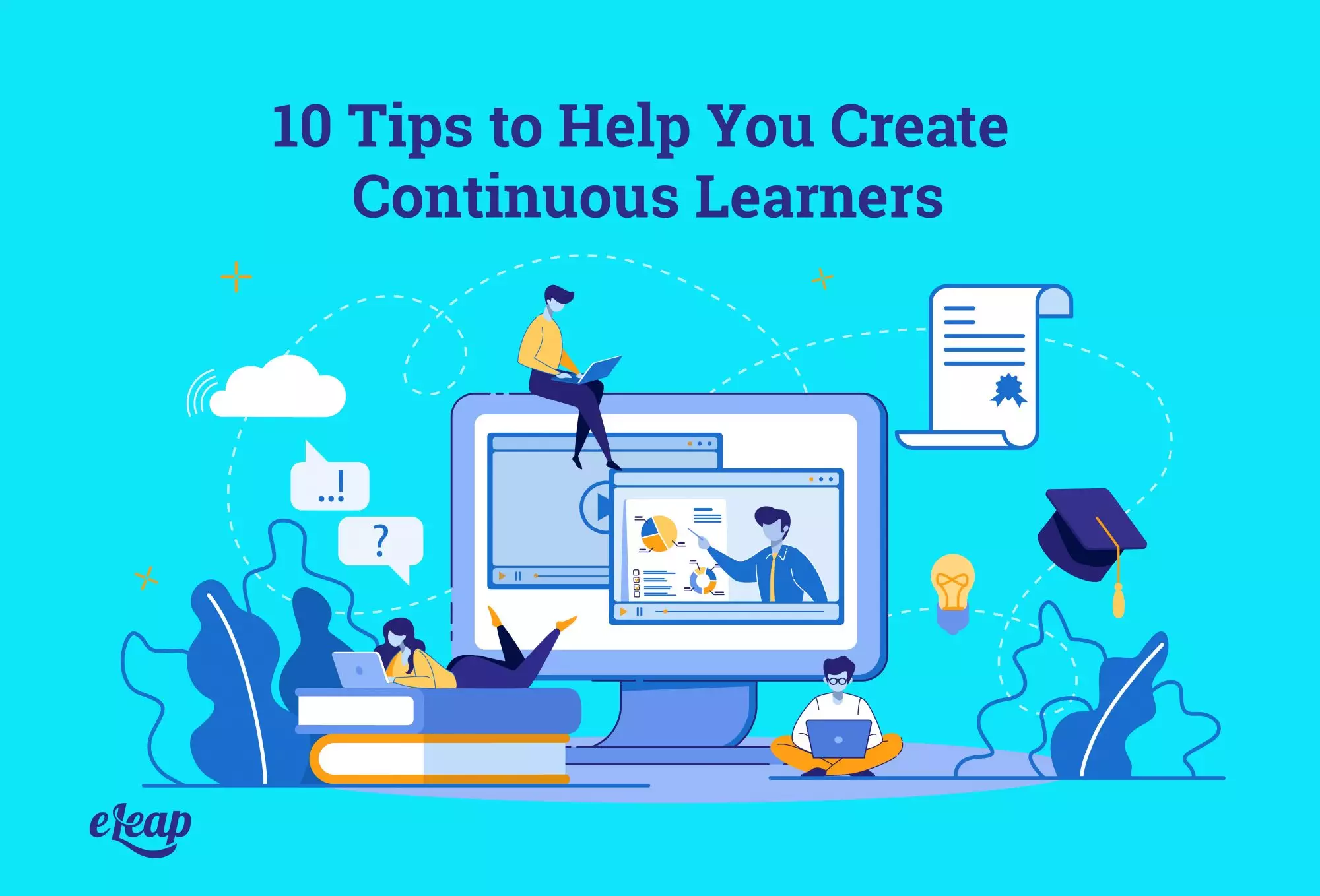10 Tips to Help You Create Continuous Learners

Continuous learning is critically important for today’s organizations. In the past, businesses could afford to hire based on an existing skillset alone. Today, that’s not the case. Increasing global competition, reduced access to important skills, and empowered professionals who are choosier about where they work have changed the situation.
One of the most important things for any business is to be able to create continuous learners. Ongoing learners understand the importance of continuing training to their personal and professional success and will take any opportunity to upskill and improve themselves. This offers many benefits to businesses, including the ability to hire strategically, the chance to develop employees over time, and more.
With that being said, not everyone understands the importance of continuous learning. Some employees may actively resist taking part in L&D initiatives because of that. The good news is that you can transform even the most reluctant learner into an eager student. We’ll walk you through the most important tips below.

1. Set a Goal
First, make sure you set a goal for learning. That goal must have value to the employee and not just to the organization. Ask yourself, what does the employee gain from completing the module or material? It needs to transcend ephemeral benefits like the satisfaction of gaining new knowledge. What concrete value does the goal have? What goals will motivate your employees? This may vary from employee to employee, as well.
2. Make Learning Social
Humans are social animals. We thrive in group settings rather than on our own. We go to great lengths to build communities in our lives, whether that’s at work, at home, in a hobby, or somewhere else. We also learn better when we’re able to be social, so bake that into your training and education efforts from the beginning. Offer collaborative tools, group chat, student message boards, mentorship opportunities – anything you can think of that will make the process more social and enable better outcomes.
3. Open Learning Up
How do you learn best? When you work with the same team day in and day out? Or when you’re exposed to new people and new ideas? For most of us, it’s the latter. When you’re stuck in a rut, nothing new happens. New ideas don’t have a chance to penetrate and grow into innovative solutions. So, open your learning up across different departments, put learners into new situations, and breathe new life into your L&D initiatives.
4. Make It Easy to Find Accurate, Relevant Information
Diversity is great, but there is such a thing as too much when it comes to learning and development information sources. Too many information sources lead to increased time to research, endless scrolling through feeds, and other time sinks. Instead, make sure that you provide your learners with access to accurate, relevant information while also curating with an eye toward diversity and innovation.
5. Look Beyond Your Organization
When it comes to your learning and development materials, chances are good that you do a lot of creation in-house. You develop your own modules, you create your own quizzes, and you design your own learning paths. That’s great, but don’t forget the value of outside sources. Not only can that help bring in new ideas, but it can stimulate learners to new achievements and help them get excited about learning once more.
6. Be Proactive in Curation
Building on the previous tip, you cannot simply open the barn doors and expect your team members to find the information they need. Your L&D team needs to proactively curate with the goal of providing an ongoing stream of recent, relevant content that aligns with your learner’s goals, interests, and responsibilities.
7. Invest in Automation
If your system is too manual, your learners aren’t going to be particularly excited to use it. In fact, it can damper their enthusiasm for learning in the first place. Automation can help reduce time spent doing things by hand. For instance, providing your team with access to the top 20 most important sales-oriented blogs can be done with software. That delivers an ongoing stream of relevant, interesting information that sparks learning and leads to innovation without having to physically check those sites every day. Automation can be baked into your entire LMS, as well to help save time, effort, and hassle.
8. Create the Right Structure
Structured learning is important for creating continuous learners. If your employees are forced to cram everything in, the experience is going to be stressful, and they’re probably not going to enjoy it or retain what they learn. However, if you can space learning sessions out, provide opportunities to put learned skills to use in the real world, and then go back to learning, you’ll find the situation is very different.
9. Have Them Sum Up
Journaling has been shown to help us cement things we’ve learned, and you can do the same thing to encourage continuous learning. At the end of a learning session, have employees sum up what they learned in simple bullet points or sentences.
10. Develop a Mindset Focused on Growth
Perhaps the single most important step to create continuous learners is to help them develop a mindset of growth. We’ve all felt that we weren’t meant to be good at a particular task, that someone with a natural aptitude was better at doing something than us. With a mindset focused on growth, though, we see the lie beneath that and realize that we can learn to be better in areas where we lack natural aptitudes. Everyone is capable of continuous growth and change.
Rinse and Repeat
The 10 tips above will help you create continuous learners. However, it’s not something that you can achieve overnight. Be intentional. Plan strategically. Take things slow and steady. When you do this, you’ll begin to change your organization’s culture, which will not just help existing learners become more committed to ongoing learning, but will attract continuous learners, too.